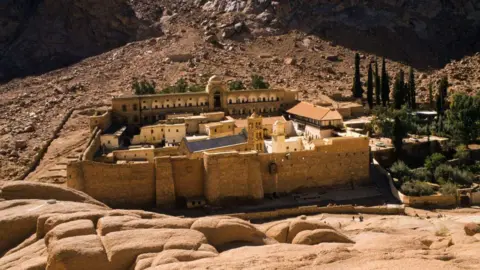In a significant move that may redefine the hydropower landscape in Asia, Chinese authorities commenced the construction of what they claim will be the world's largest hydropower dam, located in Tibetan territory. The project, dubbed the Motuo Hydropower Station, aims to harness the power of the Yarlung Tsangpo river, which flows through the Tibetan plateau and into neighboring India and Bangladesh. Chinese Premier Li Qiang presided over the groundbreaking ceremony, emphasizing the project’s potential for regional prosperity and environmental stewardship.
However, the initiative has raised serious alarms among neighboring countries, particularly India and Bangladesh. Critics fear that the dam will allow China to exert considerable control over the waters of the Yarlung Tsangpo, which is vital for agriculture and daily life in these downstream regions. Experts warn that the dam could lead to severe water shortages in India’s Arunachal Pradesh and Assam states, as well as in Bangladesh, where the river feeds into significant waterways such as the Siang and Brahmaputra.
Indian officials have voiced their concerns, with Arunachal Pradesh Chief Minister Pema Khandu warning of potential dire consequences for local tribes and agriculture if China manages water flow from the dam. The strategic implications of such a large-scale project have not gone unnoticed in New Delhi, which is contemplating its own hydropower initiatives to mitigate potential flooding risks stemming from sudden water releases from the Chinese dam.
China’s government contends that the dam promises considerable environmental benefits and the generation of clean energy to support its eastern cities. Still, past protests against similar projects in Tibet have faced a harsh crackdown, raising significant human rights concerns. Critics argue that the hydropower developments in Tibet symbolize a broader strategy of exploiting natural resources while ignoring the rights and voices of the Tibetan people.
Environmentalists also warn of significant biodiversity loss and the perils of constructing dams in an earthquake-prone region, intensifying the debate surrounding the project. As construction continues, the Yarlung Tsangpo dam project remains a focal point of geopolitical tension, underscoring the delicate balance of water resources in an era of growing climate uncertainty.
However, the initiative has raised serious alarms among neighboring countries, particularly India and Bangladesh. Critics fear that the dam will allow China to exert considerable control over the waters of the Yarlung Tsangpo, which is vital for agriculture and daily life in these downstream regions. Experts warn that the dam could lead to severe water shortages in India’s Arunachal Pradesh and Assam states, as well as in Bangladesh, where the river feeds into significant waterways such as the Siang and Brahmaputra.
Indian officials have voiced their concerns, with Arunachal Pradesh Chief Minister Pema Khandu warning of potential dire consequences for local tribes and agriculture if China manages water flow from the dam. The strategic implications of such a large-scale project have not gone unnoticed in New Delhi, which is contemplating its own hydropower initiatives to mitigate potential flooding risks stemming from sudden water releases from the Chinese dam.
China’s government contends that the dam promises considerable environmental benefits and the generation of clean energy to support its eastern cities. Still, past protests against similar projects in Tibet have faced a harsh crackdown, raising significant human rights concerns. Critics argue that the hydropower developments in Tibet symbolize a broader strategy of exploiting natural resources while ignoring the rights and voices of the Tibetan people.
Environmentalists also warn of significant biodiversity loss and the perils of constructing dams in an earthquake-prone region, intensifying the debate surrounding the project. As construction continues, the Yarlung Tsangpo dam project remains a focal point of geopolitical tension, underscoring the delicate balance of water resources in an era of growing climate uncertainty.






















